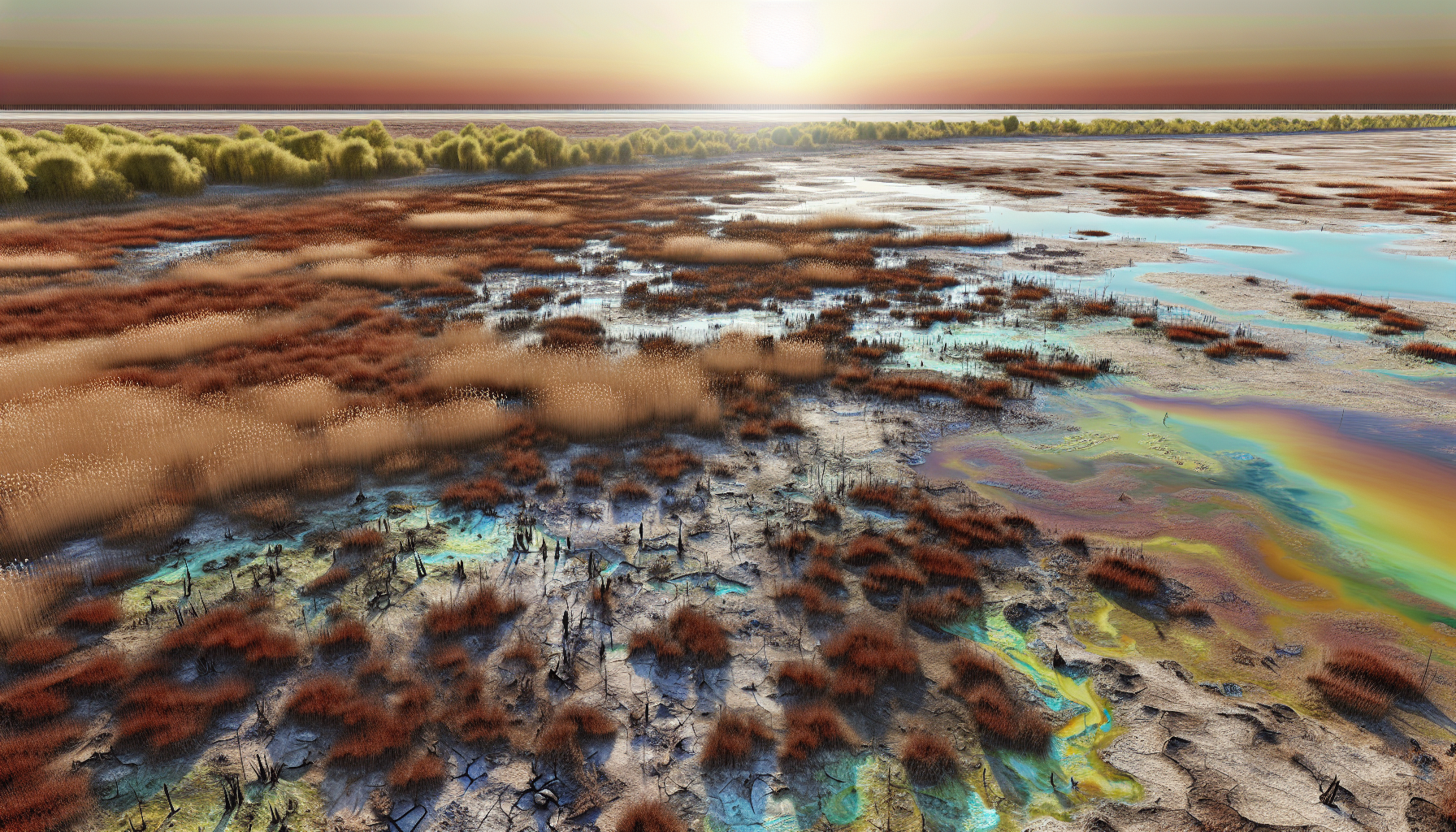The once lush symphony of the marsh has been quieted to hushed murmurs, and a requiem now hangs in the humid air. A place where life once thrived in resplendent abundance, the marsh has become a spectral landscape, merely the shadow of its past verdancy. ‘The Last Whispers of the Marsh’ invites its readers to traverse the despondent terrain that starkly embodies the endowment of humanity’s relentless environmental apathy.
In the not-so-distant past, the marsh was alive with the exuberance of biodiversity. Frogs leaped from leaf to leaf, their choruses crafting an aural tapestry as rich as the physical one beneath them. But now, these choruses have hushed; the frogs have all but vanished, their silence a resounding alarm to those willing to heed it. The marsh has fallen victim to a multifaceted onslaught: the relentless stride of climate change, the suffocating grip of pollution, and the blunt force of habitat destruction.
Where once water flowed, now mud cracks, a visceral testament to the desiccation that has gripped the ecosystem. Pools that mirrored the sky, a converging point for aquatic life, have withered under the scorching sun. Bird song is sparse, the few resilient species singing a lament for their lost companions. Insects, the vital pollinators and base of the food web, falter in numbers and variety, as pesticides and environmental toxins render their struggle for survival grimmer by the day.
Ruminating on this eerie quietude, it’s crucial to recognize the marsh as more than a habitat. It is a natural purifier, a vast nursery for life, and a crucial buffer against climate catastrophes. Marshes safeguard against flooding, sequester carbon, and nurture juvenile fish and other wildlife, essential not just for the environment but for human sustenance as well.
Yet, amidst this desolation, humanity’s hubris thrives. Industrial complexes claw at the horizon, belching forth emissions that only hasten the marsh’s end. Agricultural run-off funnels into the quiescent waters, anointing them with toxins and disrupting the fragile ecological balance. The consequent algal blooms asphyxiate life, leaving behind a watery graveyard.
As a stark contrast to the marsh’s current predicament, history whispers of the sacred bond between these wetlands and ancient civilizations. Folklore and art abound with reverence for the marsh, it once was akin to an abundant cornucopia, a place of sustenance and spiritual sanctuary. But those whispers are all but fading echoes now, lost amidst the cacophony of modernity’s dissonance.
Conversations with those once nurturing the marsh – the conservationists, the biologists, the local stewards – paint a picture of relentless resolve that has succumbed to a heavy-hearted acceptance. Dr. Elizabeth Aarons, previously quoted in connection with the vanishing frogs, shares a poignant sentiment: ‘Our efforts persist in the face of inevitable loss. There is a profound grief in knowing the marsh whispers its final breaths, and we are its powerless witnesses.’
This narrative extends beyond the marshes. Similar stories of ecological grief sprout in other corners of the globe: a reminder that the marsh’s sorrow is but one note in a global dirge. Human actions have unraveled the intricate web of life, and now we stand amidst the threads, confounded by the vastness of the tapestry we have undone.
The marsh, a relic of bygone vitality, an epitaph to lost diversity, serves as a harrowing backdrop urging us to reflect. In the twilit world of Green Dystopia, the marsh’s dissolution is the stark reality we face — a reality where nature’s resilience is put to the ultimate test, and often, it is found wanting.
Let this not just be a read to awaken environmental melancholy but an immersive experience that forges an indelible desire for change – in the real world where hope, unlike in this dystopian reflection, must not be lost.
